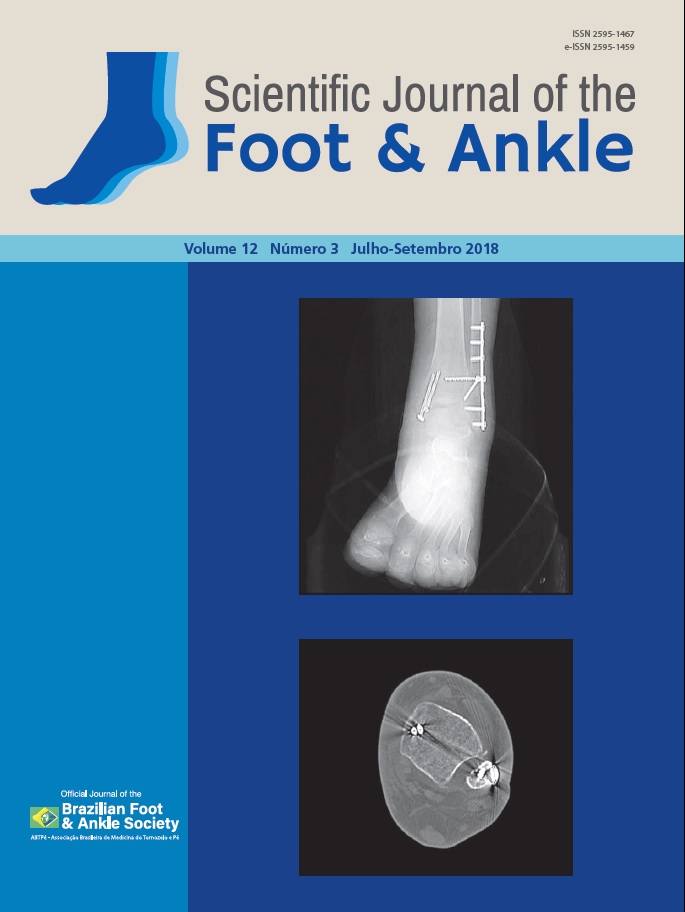Increased intermetatarsal angle of the proximal fragment after modified scarf osteotomy
a radiographic study
DOI:
https://doi.org/10.30795/scijfootankle.2018.v12.791Keywords:
Hallux valgus, Osteotomy, Metatarsal bones, Joint instability, Sesamoid bonesAbstract
Objective: Hypermobility of the first ray can explain the correlation between the instability of this joint and the progression and recurrence of hallux valgus. The modified Scarf osteotomy allows rotation of the distal fragment, in addition to medial traction of the proximal fragment. We believe that if the deformity is corrected by maximizing the instability of the metatarsal-cuneiform joint so that medial inclination of the first metatarsal is no longer possible, then the risk of recurrence in the long term may be lower. Methods: The pre- and postoperative radiographs of 32 modified Scarf osteotomy cases were analysed. We compared already established angles for the radiographic analysis of the deformity, in addition to the creation of two new parameters for the evaluation of the varisation capacity of the osteotomy proximal stump. Results: There was correction of hallux valgus and the intermetatarsal angle, in addition to correction of the first metatarsal head in relation to the sesamoids. We found an increase of the medial inclination of the osteotomy proximal fragment, measured using the parameters proposed by the authors. Conclusion: The modified Scarf osteotomy corrects the conventional hallux valgus parameters, is able to increase the varisation of the proximal fragment of the first metatarsal, and may lead to greater instability in the first metatarsal-cuneiform joint, which, in our opinion, would lead to less chance of recurrence in the medium and long term. Level of Evidence IV; Diagnostic Studies.




